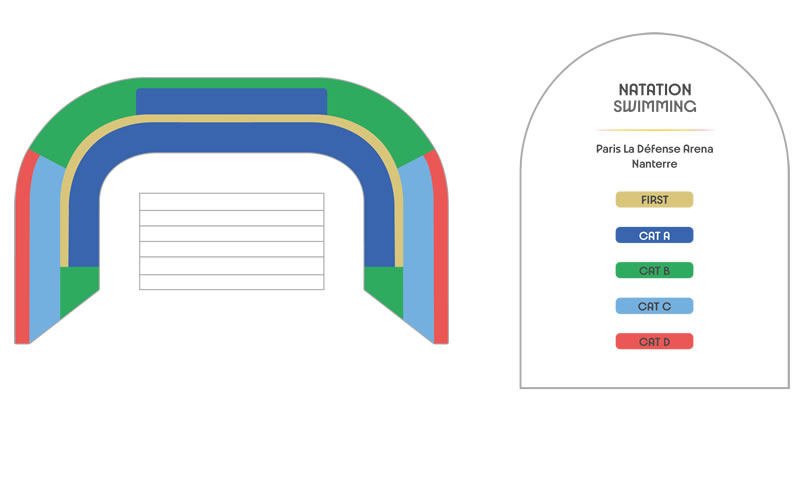SWM16 M/W/Mixed - Semi-finals, finals - Summer Olympics - Paris Olympic 2024 Olympic Swimming Tickets

Paris La Defense Arena - Swimming
Olympic Swimming
Olympic Swimming is one of the most iconic and widely watched sports in the Summer Olympic Games. It features a variety of races that test speed, endurance, and technique across different swimming styles and distances. Swimming has been a core part of the Olympics since the modern Games began, captivating audiences with thrilling finishes and record-breaking performances.
The sport includes four primary strokes: freestyle, backstroke, breaststroke, and butterfly. Each stroke has its own unique technique and challenges, demanding high levels of skill, strength, and coordination. Races range from short sprints, such as the 50-meter freestyle, to long-distance events like the 1500-meter freestyle, allowing athletes with different strengths to compete at the highest level.
Olympic swimming competitions take place in a standard 50-meter pool, known as a long course pool. Events are organized into heats, semifinals, and finals, with swimmers advancing based on their times. This structure ensures that only the fastest swimmers compete for medals, often resulting in intense, closely contested races.
In addition to individual events, relay races are a key part of Olympic swimming. Teams of four swimmers each complete a segment of the race, passing the baton through precise timing on starts and turns. Relays add a strategic and team-oriented dimension to the sport, often producing some of the most exciting moments of the Games.
Olympic swimmers train rigorously to optimize every aspect of their performance, from stroke mechanics and breathing techniques to starts, turns, and finishes. Physical conditioning, mental focus, and race strategy all play crucial roles in achieving success at this elite level.
Throughout Olympic history, swimming has produced legendary athletes who have set multiple world records and become global icons. Countries such as the United States, Australia, and China have been dominant forces, consistently winning medals and pushing the sport’s boundaries.
Overall, Olympic Swimming is a spectacular showcase of human speed, endurance, and precision. It embodies the Olympic spirit of excellence and determination, inspiring millions worldwide with its combination of individual brilliance and team camaraderie.
